Deer live on land; they’re terrestrial animals that chiefly live in herds and graze grass, but can deer swim, too? Let’s discover 13 interesting facts about these surprisingly strong swimmers and how they cope in water.
Can Deer Swim?
Yes, deer are surprisingly accomplished swimmers that are spotted in lakes, rivers, and even oceans. Clocked at 15 mph in water, they swim efficiently using strong legs and a unique coat. These features enable deer to not only stay afloat but also navigate and use rivers to their advantage.

Deer primarily swim to avoid danger.
©Ivonne Wierink/Shutterstock.com
Although deer primarily swim only if they have to, they’re not averse to getting wet to survive and find better resources.
Here are 13 interesting facts about these strong swimmers.
1. Deer Have Unique Coats
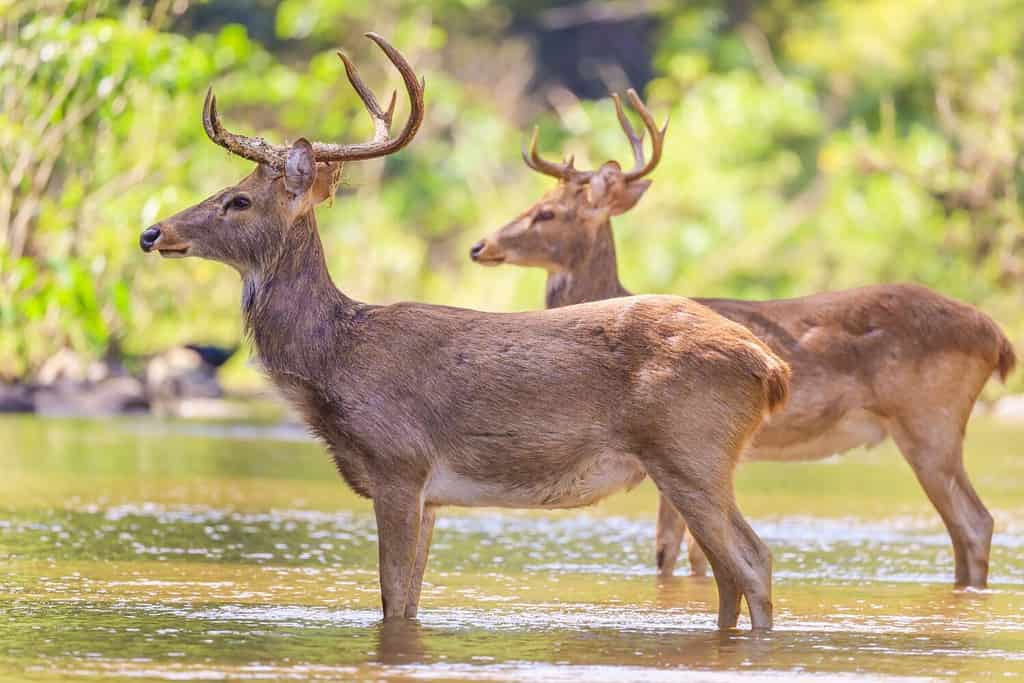
Deer have two hair coats, the undercoat traps warmth and the top coat aids buoyancy.
©THANAROT NGOENWILAI/Shutterstock.com
Deer can swim well due to several reasons, but one of the main reasons is a unique two-layer coat. An undercoat traps heat against a deer’s skin, while its topcoat of hollow hairs provides buoyancy that keeps it afloat and saves energy for moving in the right direction. A deer’s coat keeps it warm and safe in the water.
2. They Have Olympic Swimmer Legs
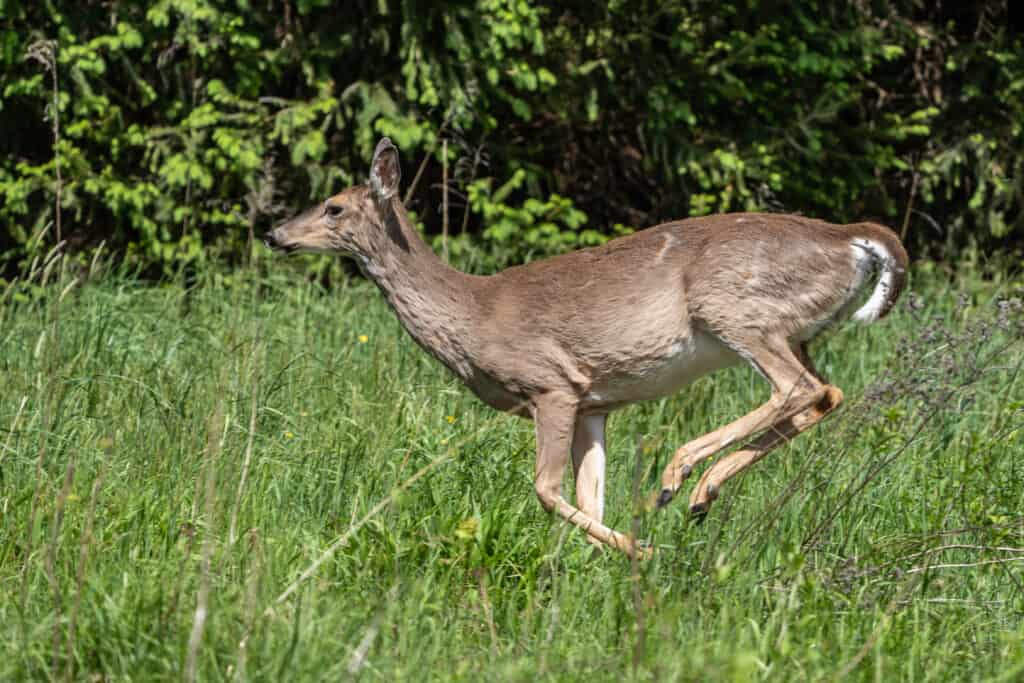
A deer’s strong back legs propel it through water.
©Amy Lutz/Shutterstock.com
While its coat traps warmth and keeps it afloat, a deer’s powerful back legs provide effective, strong propulsion and navigation. All four of a deer’s powerful legs aim it in the right direction and keep kicking until it arrives there.
3. Torpedo Shaped Bodies

A deer’s torpedo shaped body cuts through water with minimal drag.
©Christopher Roth/iStock via Getty Images
In the water, a deer’s body shape is perfect for swimming. Its slimline torso cuts through the water with minimal drag.
4. Deer Have Stamina in Bucket Loads
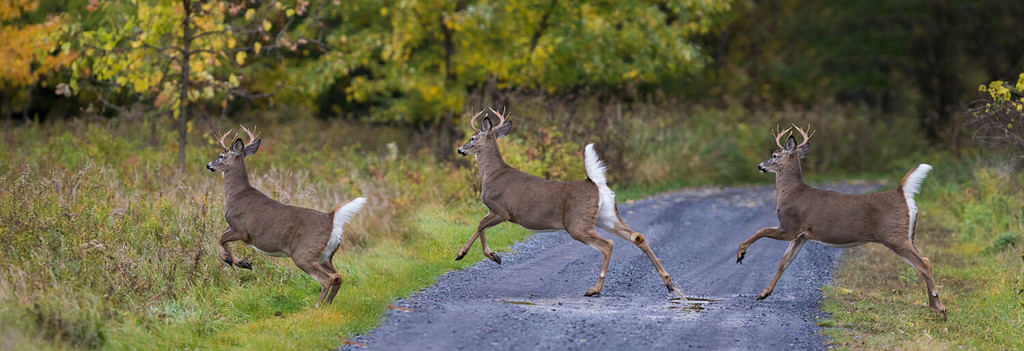
Stupendous stamina means a deer can swim without quickly tiring.
©Mircea Costina/Shutterstock.com
Deers have so much stamina they can travel for miles in strong currents. With their fit bodies, huge lungs, and formidable survival instincts, deer are more than capable of swimming to save their lives and find better environments.
5. Deer Can Swim for Miles

Deer can swim for miles, some have been spotted swimming miles out to sea.
©Jeff the quiet / CC0, via Wikimedia Commons – License
Deer don’t just swim to cross a river. They’ve been spotted traveling along rivers and in the ocean. You don’t have to look far for YouTube clips of swimming deer. In short, these powerful animals travel as far as their energy can take them.
Fishermen have clocked individuals five miles out to sea, and a Michigan couple witnessed a deer swimming in the ocean for at least 90 minutes. The National Deer Association has documented evidence collected by conservationists that proves deer swim up to 2.4 miles in lakes and rivers.
Deer are not flash in the pan swimmers!
6. Deer Can Go Underwater
Deer can dive underwater or get pulled down by a current and survive. They can’t breathe underwater but can right themselves and surface after sinking or diving.
7. All Deer Swim, but Some Are Better
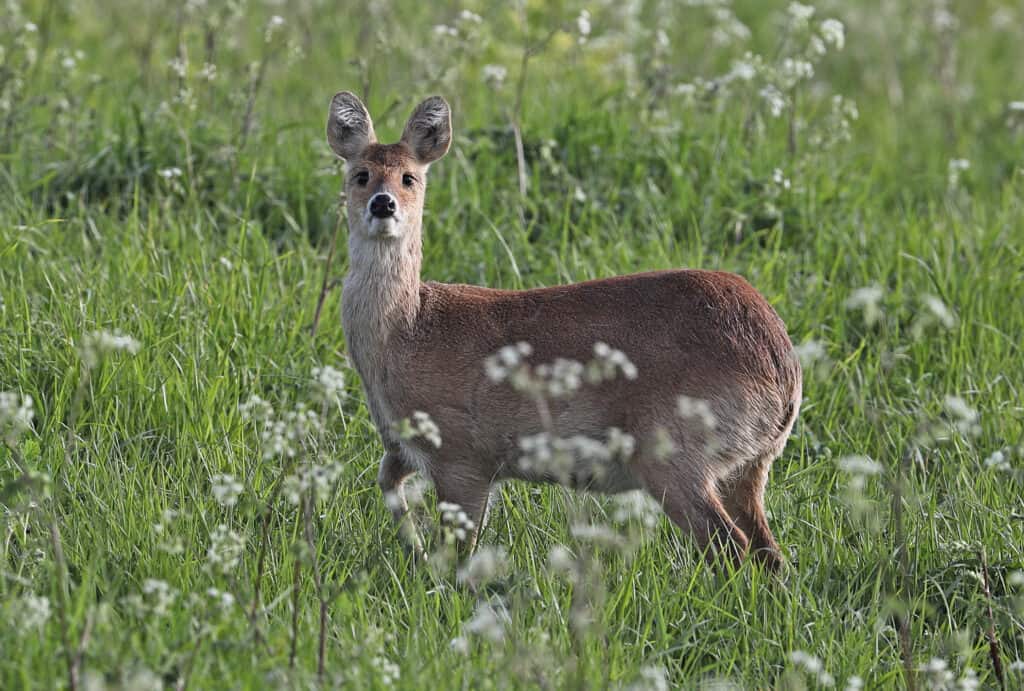
Chinese water deer are efficient swimmers.
©iStock.com/Neil Bowman
Roe, red, and white-tailed deer can all swim, but some species are stronger swimmers.
Korean water deer and Chinese water deer live in shallow river environments, eating reeds and aquatic vegetation whilst hidden in the banks and willows. Native to Asia, these 20-inch at-the-shoulder deer were imported to UK manor houses and zoos in 1870 and spread in the wild soon after. Populations now exist in most of Europe and the United States.
Unique water deer are proficient swimmers. They have streamlined long necks, legs, and very narrow hips. Water deer’s back legs are even more powerful for their size than red or white-tailed deer, and this enables rapid swimming.
8. Fawns Can Swim Too
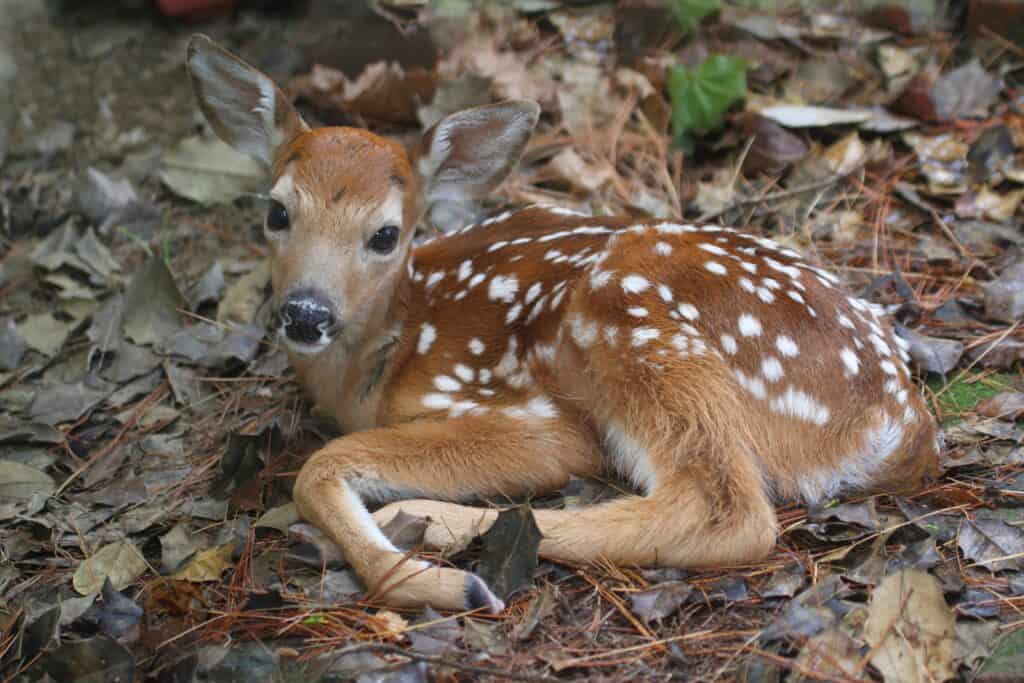
Although fawns can swim, they quickly tire.
©Steve Byland/Shutterstock.com
Fawns can swim, too, though they don’t have as much energy as their parents and can’t travel as far. They become exhausted quickly.
9. They Swim for Safety
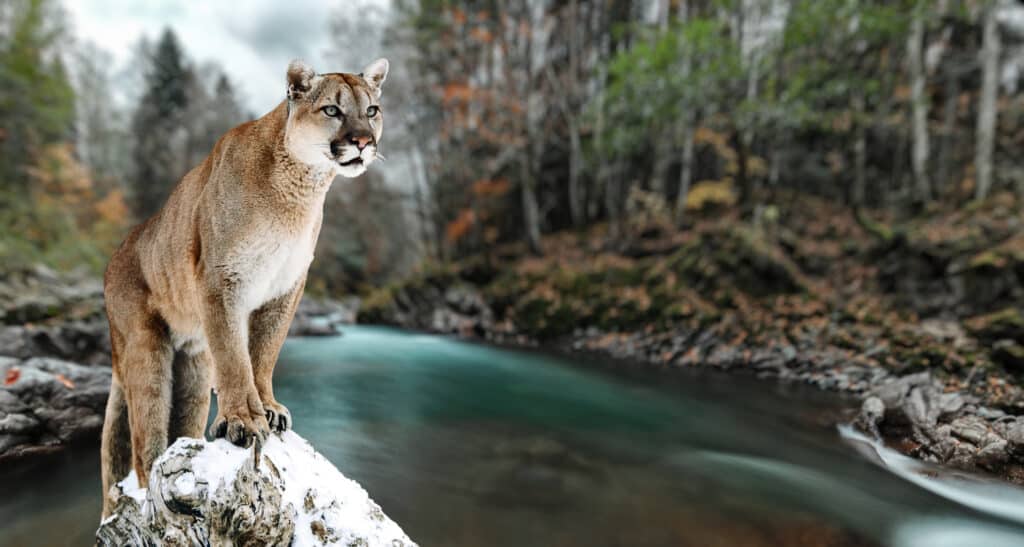
Mountain lions, bear, and wolves all hunt deer.
©Evgeniyqw/Shutterstock.com
Deer chiefly drink water, but they’ll swim to safety or to find food.
When a deer is often spotted in the water, it’s frightened and jumped in to escape a predator. Dogs, bears, mountain lions, and humans all hunt deer. Typically, a deer won’t spend any more time than it needs to in water and get out as soon as it’s safe.
Deer learn fast; they have to in order to survive. Once a deer understands that jumping into the water helps it to escape predators, it’ll do it regularly.
10. They Look for Better Resources

Deer species travel or cross rivers to find better habitats.
©twildlife/iStock via Getty Images
Researchers have recorded bucks (males) swimming 1-2 miles up and downstream rivers to find mates and then swimming back to their home habitats, and pregnant females swim to islands to give birth in safety.
Because deer like swampy ground with lots of fresh new vegetation, they frequently cross small streams and rivers. White-tailed deer live near freshwater rivers and streams, so water and swimming are just part of their lifestyle.
11. Deer Swim for Health!
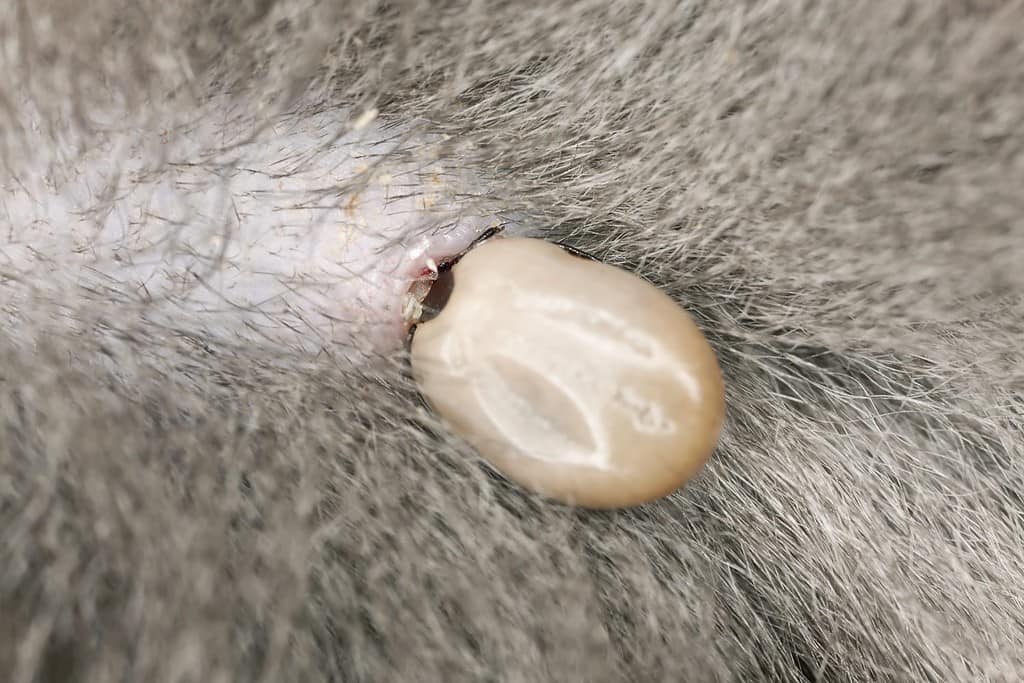
Swimming drowns tick and fleas.
©Henrik Larsson/Shutterstock.com
Researchers suggest they also get in the water to drown ticks, fleas, and other crawling-biting insects like mosquito clouds. Some researchers say this is why deer jump into people’s swimming pools.
12. You Ought to Leave Swimming Deer Alone
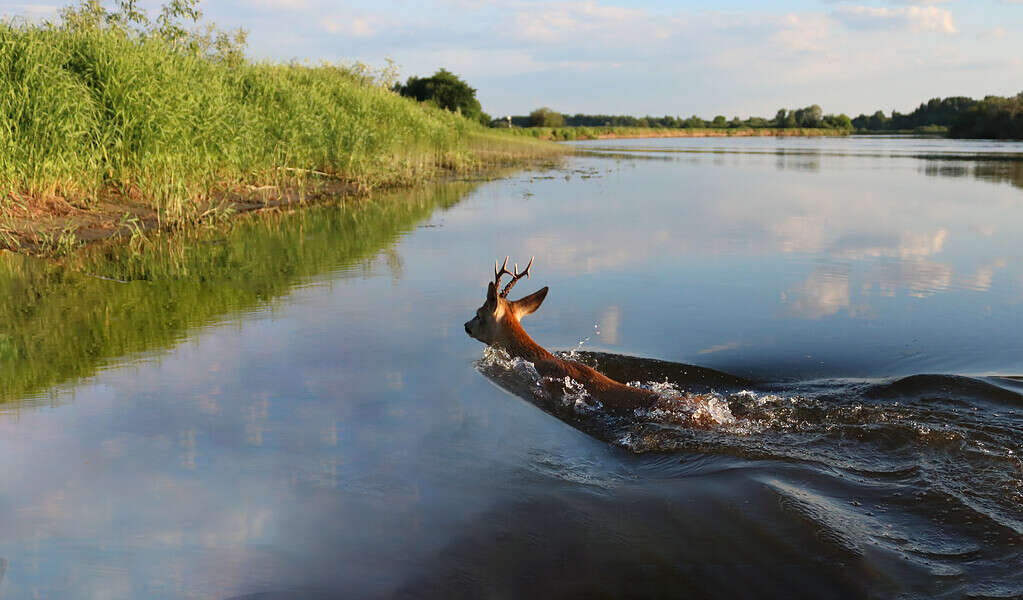
Don’t interfere with a deer in water, fright makes it swim even further.
©Natallia_hap/Shutterstock.com
In the majority of cases, a deer is just fine in water. Don’t disturb it or chase it along to the riverbank because it’s likely looking for a safe place to get out. Unless the deer is in distress, leave it alone. Call local wildlife authorities if you spot a deer in distress.
13. Deer Predators Live in the Water
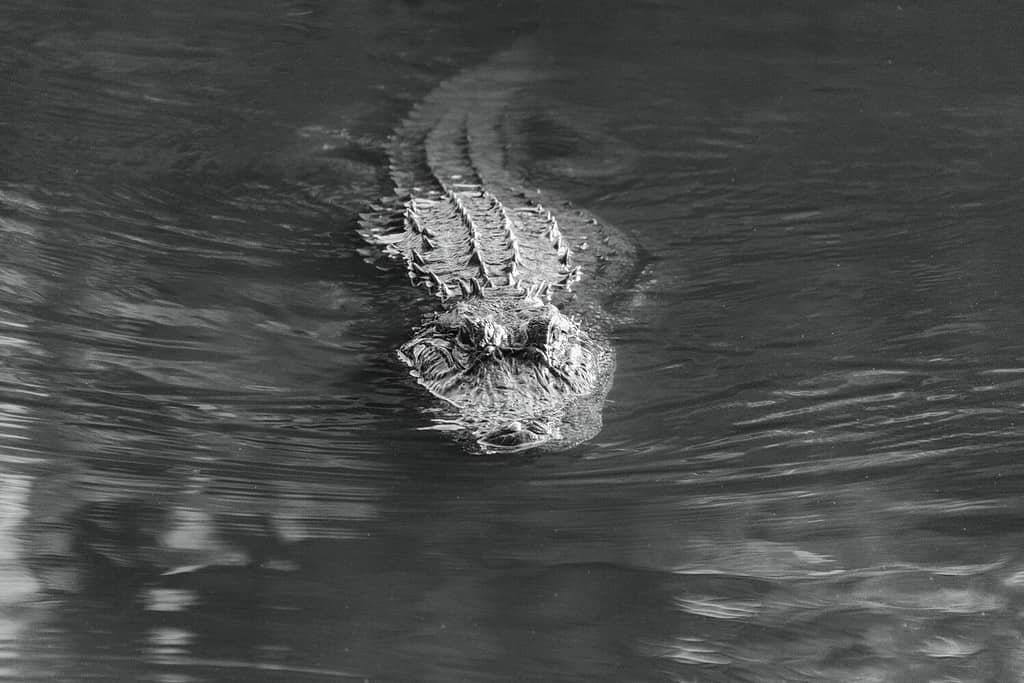
Where habitats cross over, alligators will prey on swimming deer.
©Mix Tape/Shutterstock.com
Herbivorous deer have plenty of predators, and swimming is one of the ways they utilize to escape them. Mountain lions, bears, wolves, coyotes, and wolverines all prey on deer, but what about water-borne threats like alligators?
Alligators would undoubtedly grab a deer in the water. These large reptiles float just beneath the waterline and chiefly take deer drinking from the banks with their powerful jaws and drown them. A swimming deer is extremely vulnerable to alligator attack wherever the two have joint habitats, such as Florida and Alabama.
Recap: Are Deer Good Swimmers?
To recap, yes, deer can swim, and they are strong swimmers. A deer’s chief reason for swimming is to escape danger, but they also swim for better resources and to get rid of ticks and fleas.
The photo featured at the top of this post is © Betty Shelton/Shutterstock.com
Thank you for reading! Have some feedback for us? Contact the AZ Animals editorial team.






